Christ Salvator Mundi
This painting is located in the picturesque 18th century Venetian landscape. The use of delicate colors, curved shapes and the decorative presence of cherubim, as an architectural element, frame in Rococo style this work; the chiaroscuro, although present, does not generate too intense contrasts and the backside brings more brightness, filtered through an alleged cloud cover. The light tones continue in the delicate reflections of the hair and clothes of Christ, as well as on his face with diaphanous skin, similar to that of the two cherubim. The features of the Christ seem quite original, almost derived from a portrait, because the chubby face and often makes them very childish; to counter these details contribute long hair and gaze fixed on the viewer, serious and solemn. The period and geographical background of this work lead to examples of artists close to Giovan Battista Piazzetta (1683-1754), a Venetian painter active in the first half of the 18th century and a pupil of Antonio Molinari (1655-1704), is also Venetian and can be connected to this pictorial style. From the baroque to the rococo, the artistic language is softened while preserving the tonal vivacity that we also find in this work, whose subject lends the side to a deeper reflection on the figure of Jesus savior of the world, represented by the crucified globe, and lord of the cosmos. An iconography so ancient and grandiose is then rendered with the right expressive gravity, leaving room for a greater serenity and relaxation by Christ, to which we must add the cherubim brought on the right, Useful both for decorative reasons and to soften the intense gaze of the Savior.


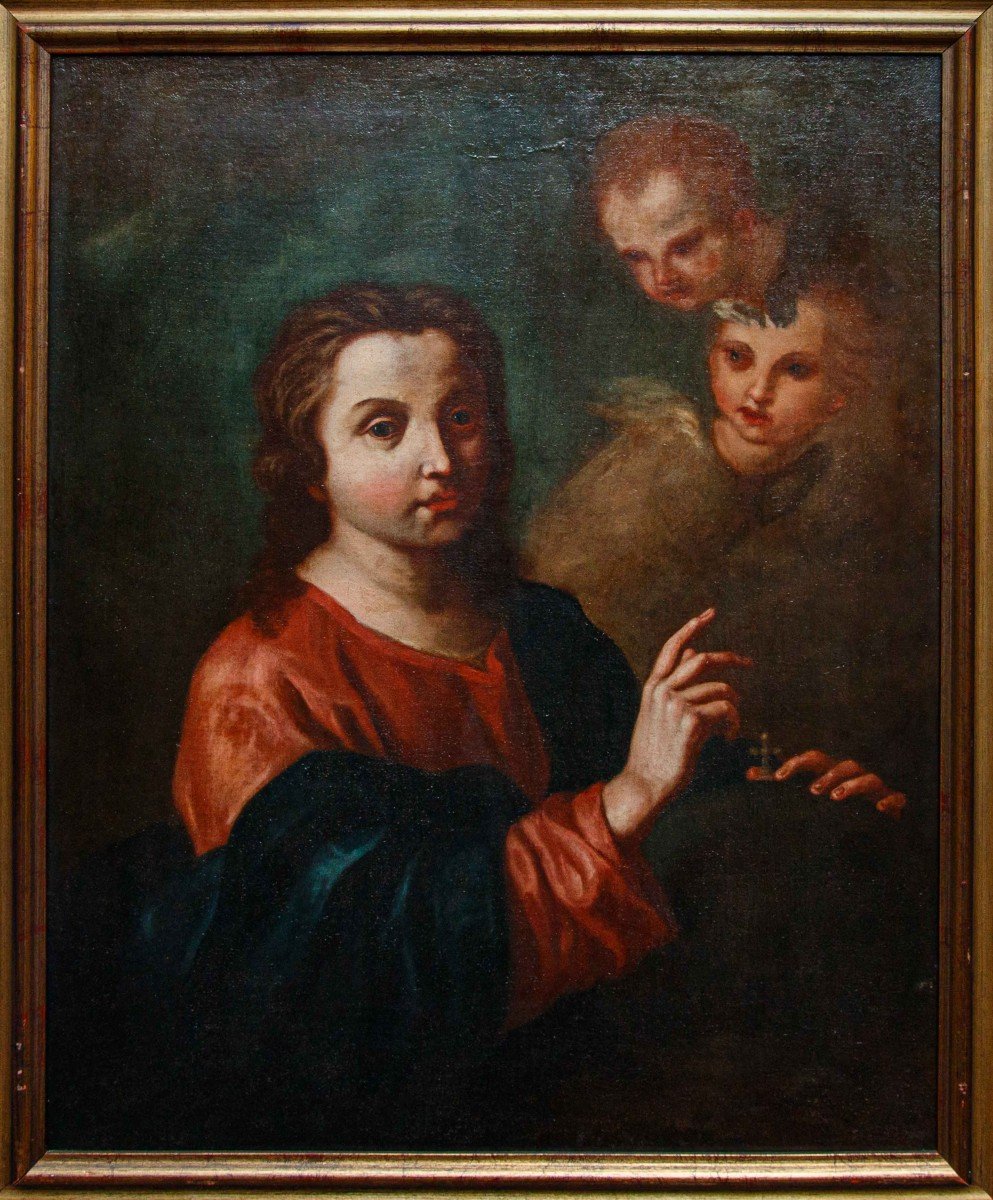
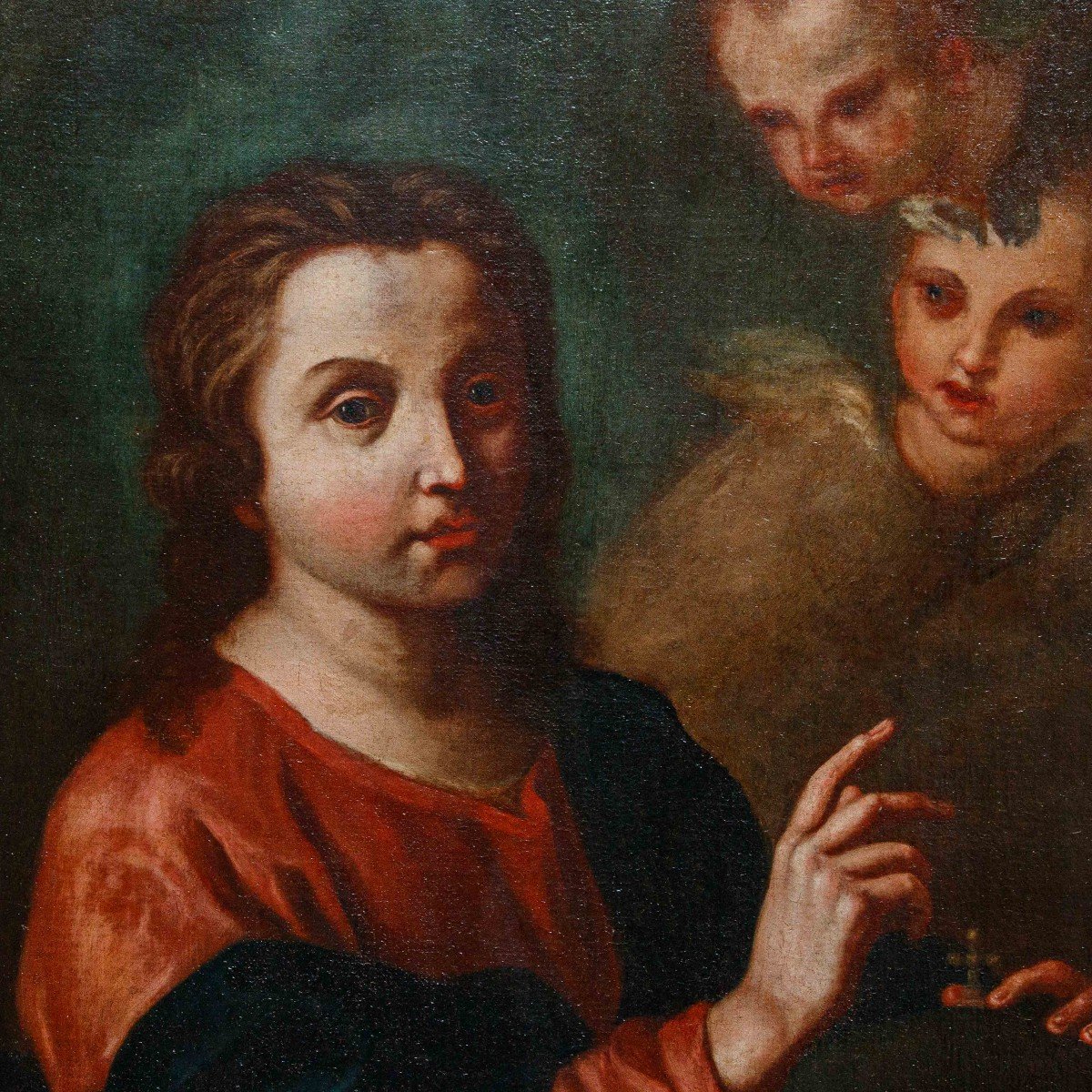
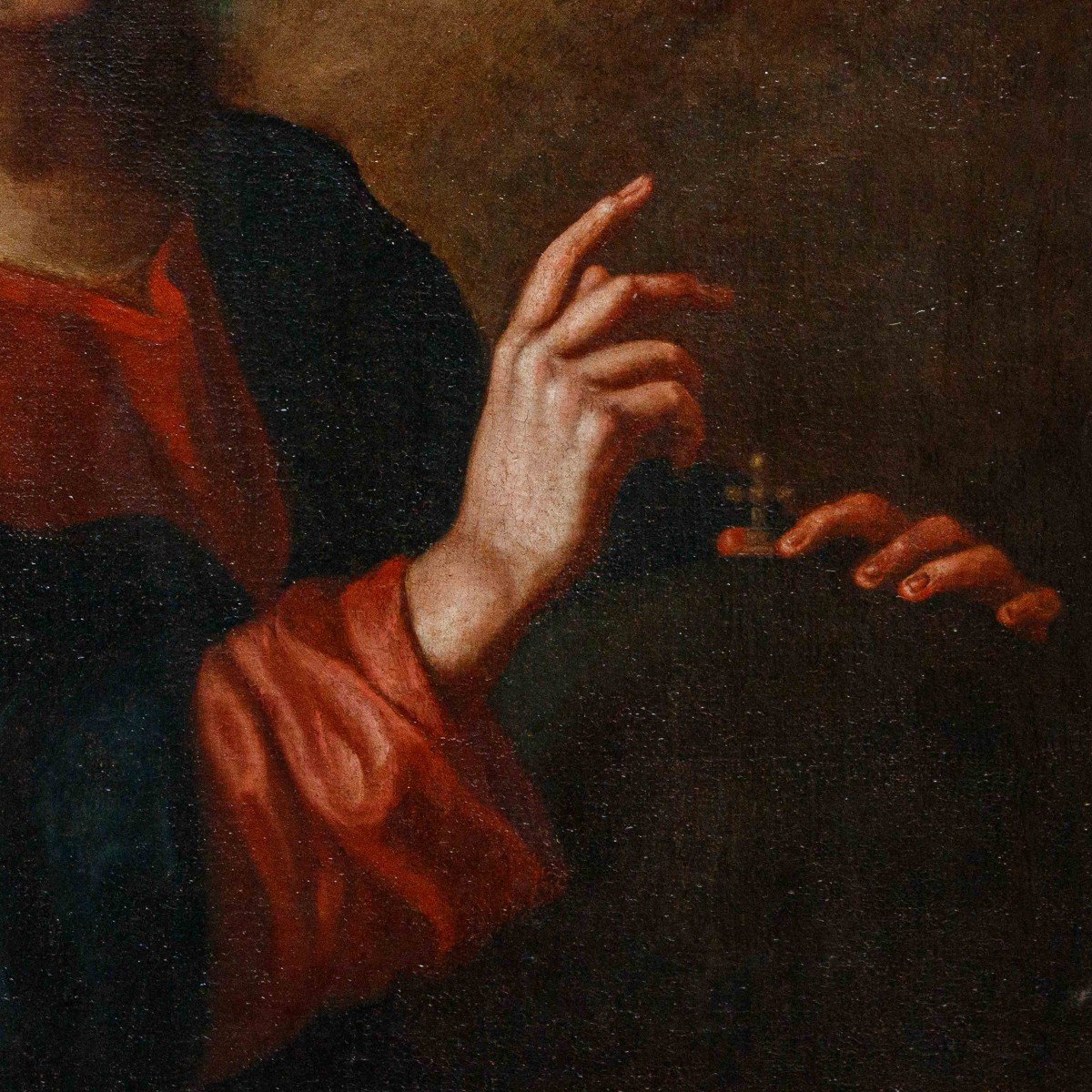
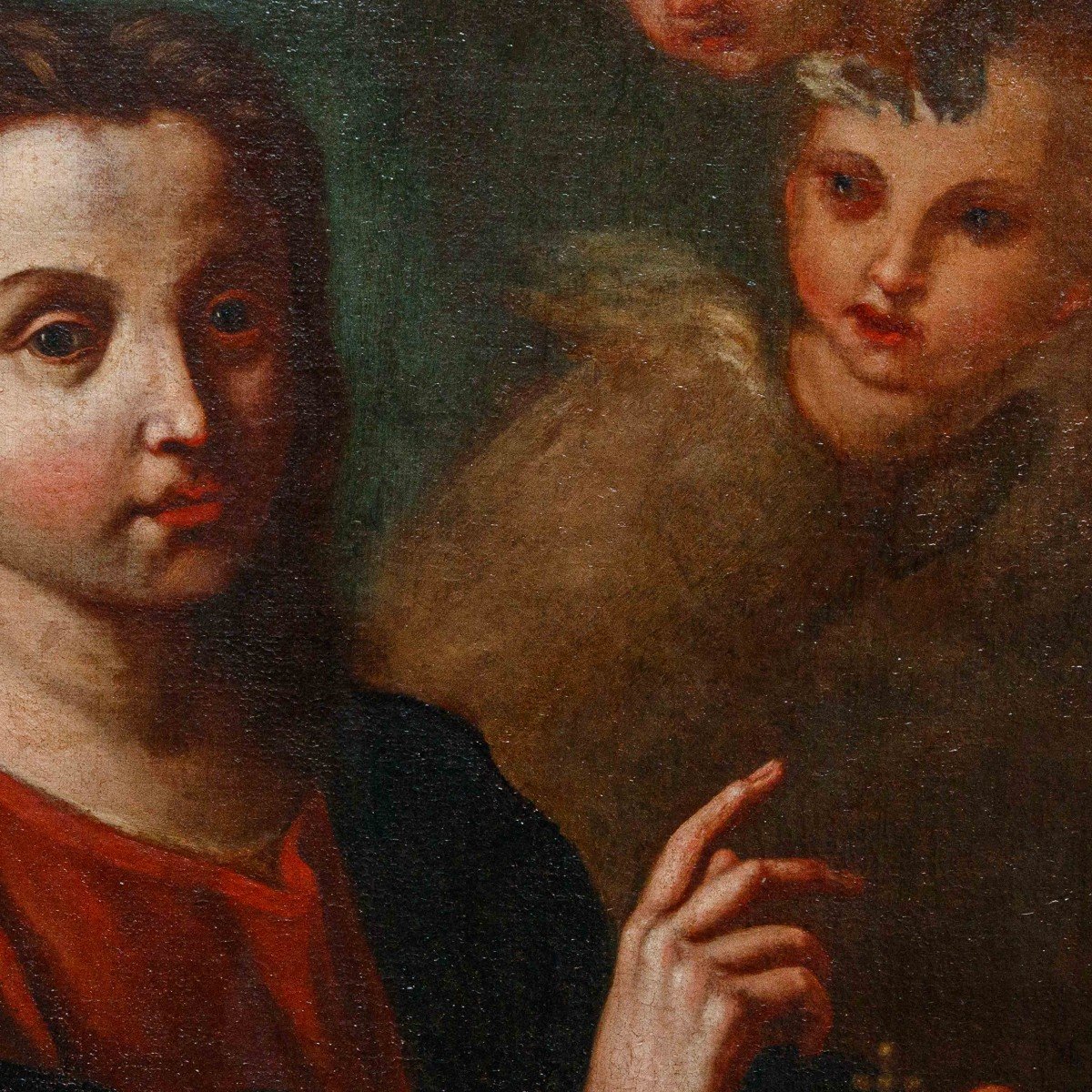

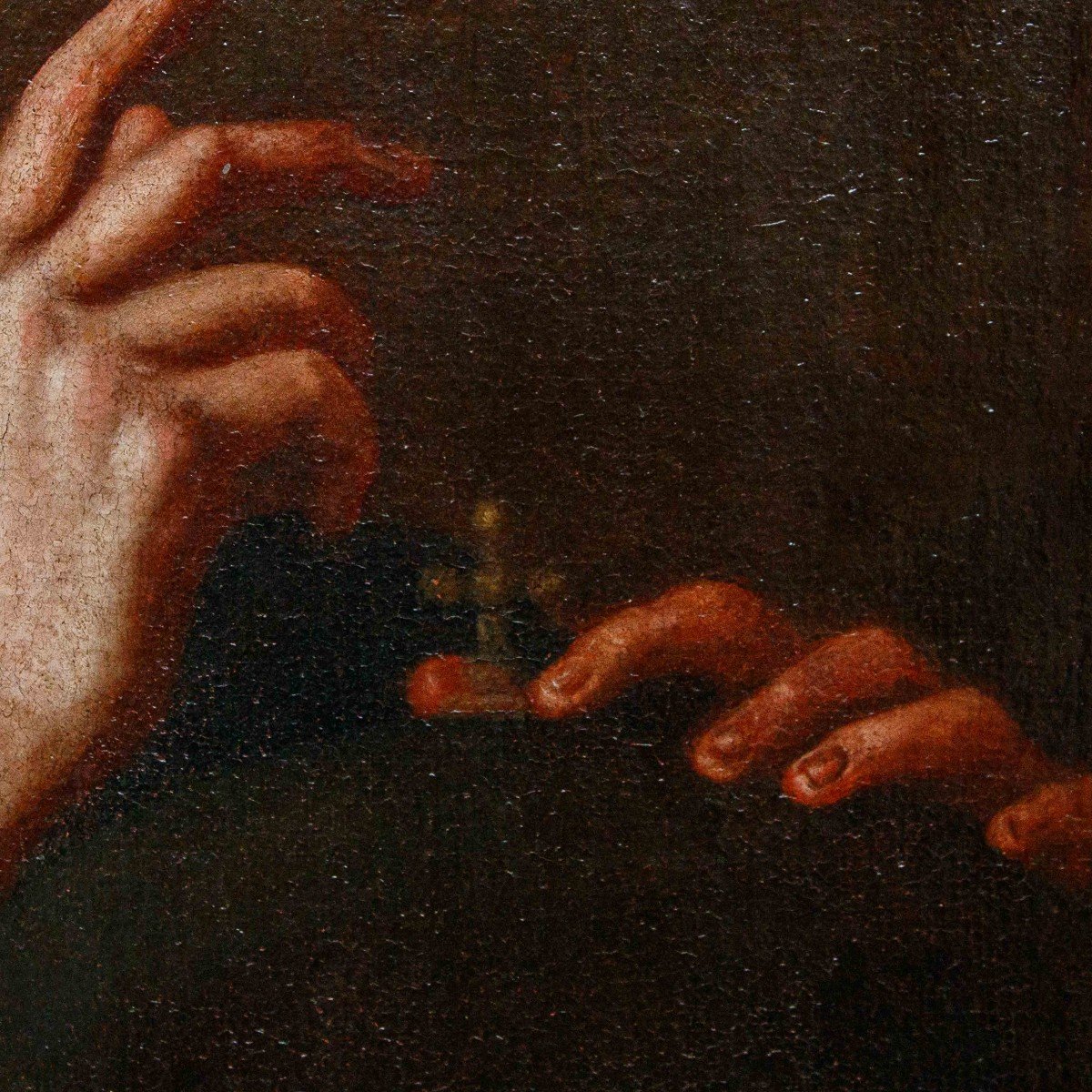
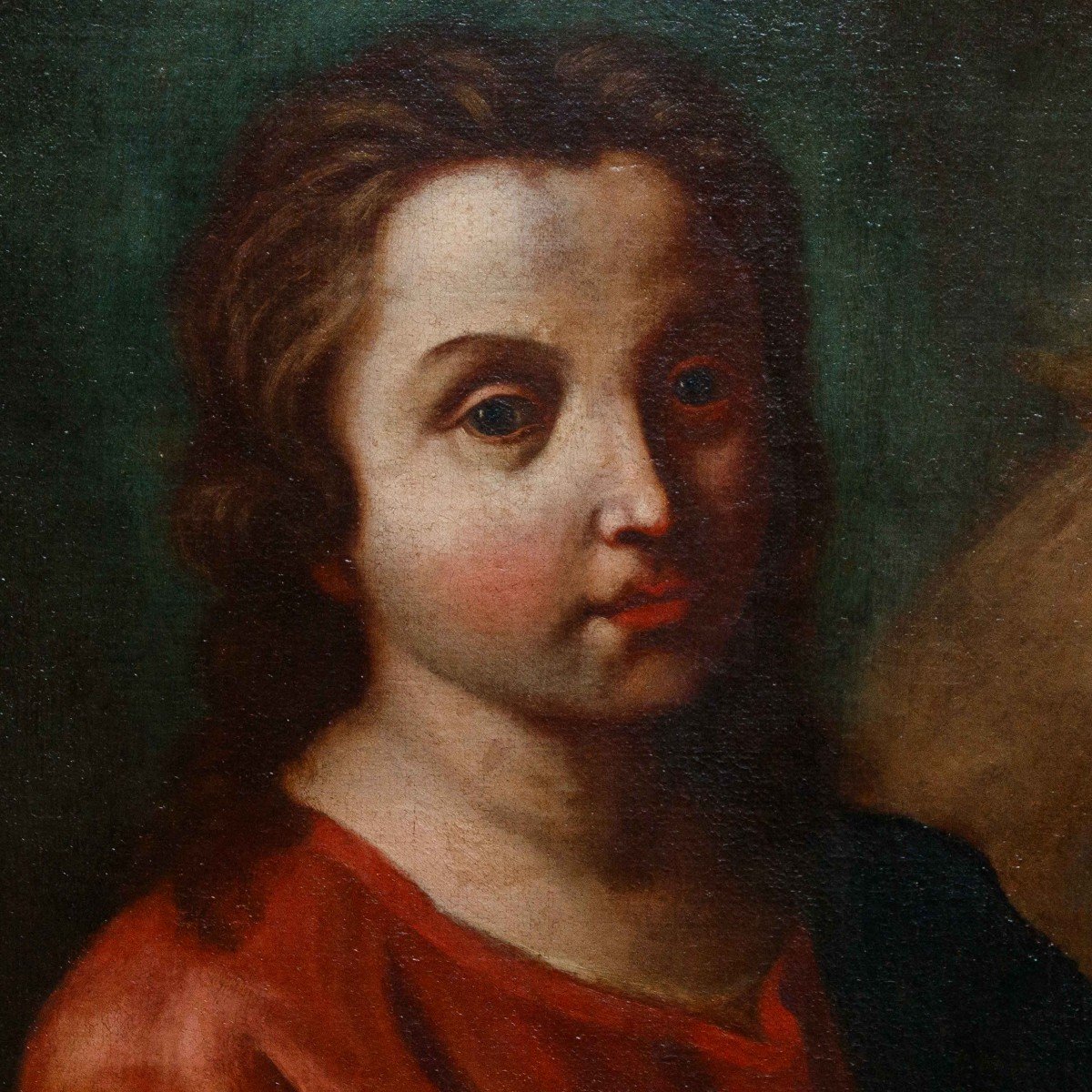









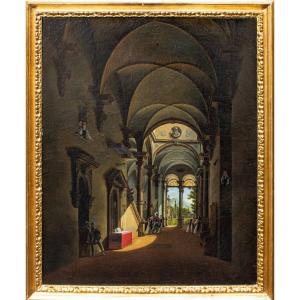

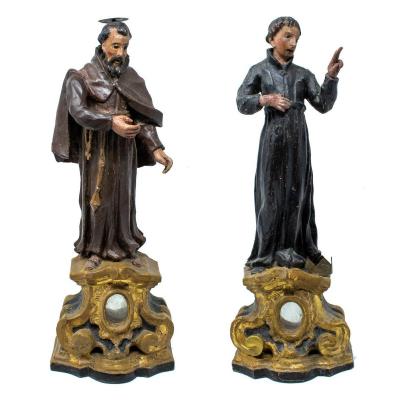






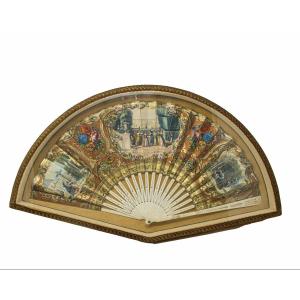

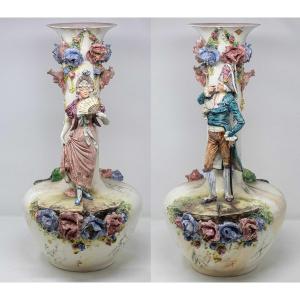


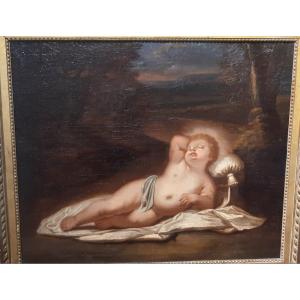
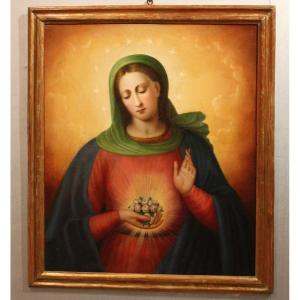
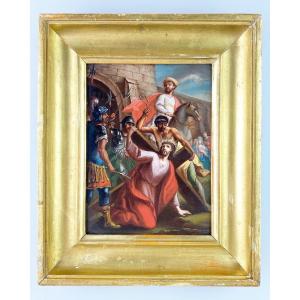





 Le Magazine de PROANTIC
Le Magazine de PROANTIC TRÉSORS Magazine
TRÉSORS Magazine Rivista Artiquariato
Rivista Artiquariato